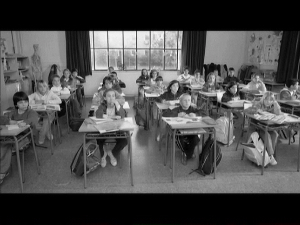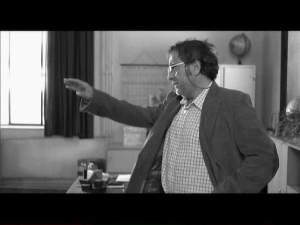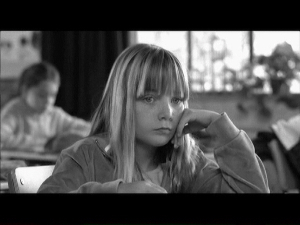Continuity System
The language developed in early films was later codified into visual grammar by the Russian genius Sergei Eisenstein and the pioneering American director D.W. Griffiths. Sometimes referred to as cinematic montage this visual language (remember that sound did not really arrive until the 1930s) developed into a system of planning, shooting and editing that is now generally referred to as the Continuity System.
What is the Continuity System?
The Continuity System is designed to provide the audience with a smooth and apparently seamless viewing experience despite the fact that a film is cobbled together from hundreds of individual clips of visual and audio information. At the core of this system is the concept of active questioning.
This means that the narrative should be constructed in a fashion where questions are set and answered through the actions and reactions of the characters in one clip and then partially answered by the next, as well as what the audience has deduced must be happening in the areas of the action that they cannot directly see. When these filmed shots and recorded sounds are edited into sequences, audiences suspend their disbelief and allow their natural curiosity about what they see and hear to draw them into the artifice of the cinematic experience and engage emotionally and intellectually with the illusion of a larger narrative world.
This process can be readily demonstrated with a simple, hypothetical shot sequence. For example:
- A class waits anxiously. Why are they anxious?
- The teacher is asking for class participation. He picks someone. Who is he pointing at?
- A girl who clearly does not know the answer. What will she say?
- And so on.
For the most part the narrative proceeds through this process: setting a question - providing a partial answer - setting a new question - providing a partial answer - setting a new question...
However, at certain points of this process, the filmmaker may want to introduce a new character, cut to a different line of action, or introduce a completely new sequence. At these points filmmakers have developed special techniques to alert the audience to the new paragraph or new chapter, through the use of specific transitions (e.g. wipes or dissolves), changing the music, changing the soundscape or using sounds that bridge a cut. Audiences are then subliminally alerted that they are about to see something new and, if they are a little confused by the new image, not to worry as it will all make sense in a few moments once a new line of question and answer is established.
Factual Texts
Though factual texts can be observational, they are very often narrated. Here the line of questioning is based around questions set by verbal narration. This is know as evidentiary editing, where the sounds and images often do not structure the narrative on their own as in a fictional film, but are linked by the rhetoric and exposition contained within the narration.
That said, it is critical that film readers are aware that most modern factual films, documentaries and news reports make use of many of the conventions, techniques and artifices of the Continuity System to support their meanings; therefore awareness of this language is a key component of 21st Century Literacy.


